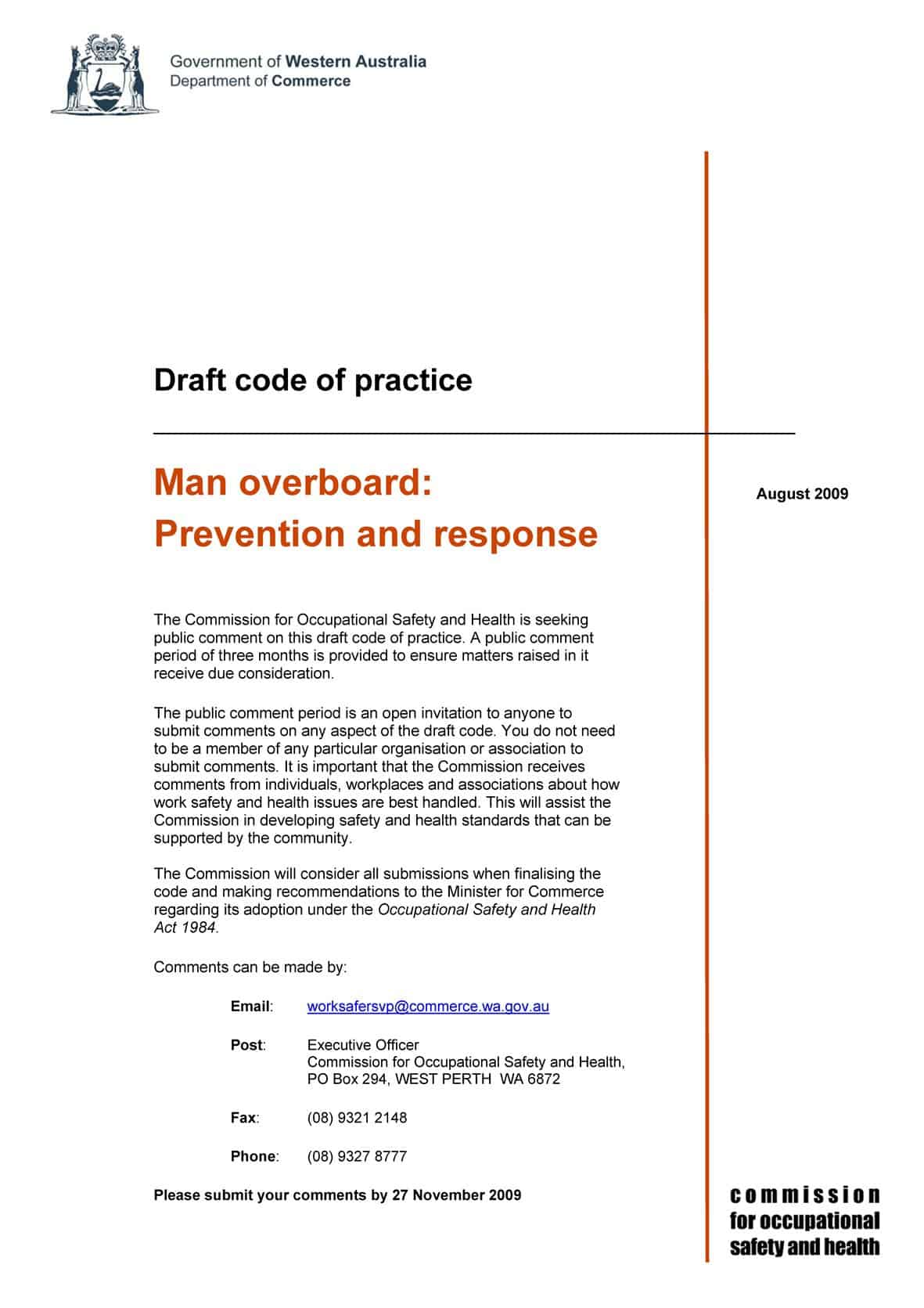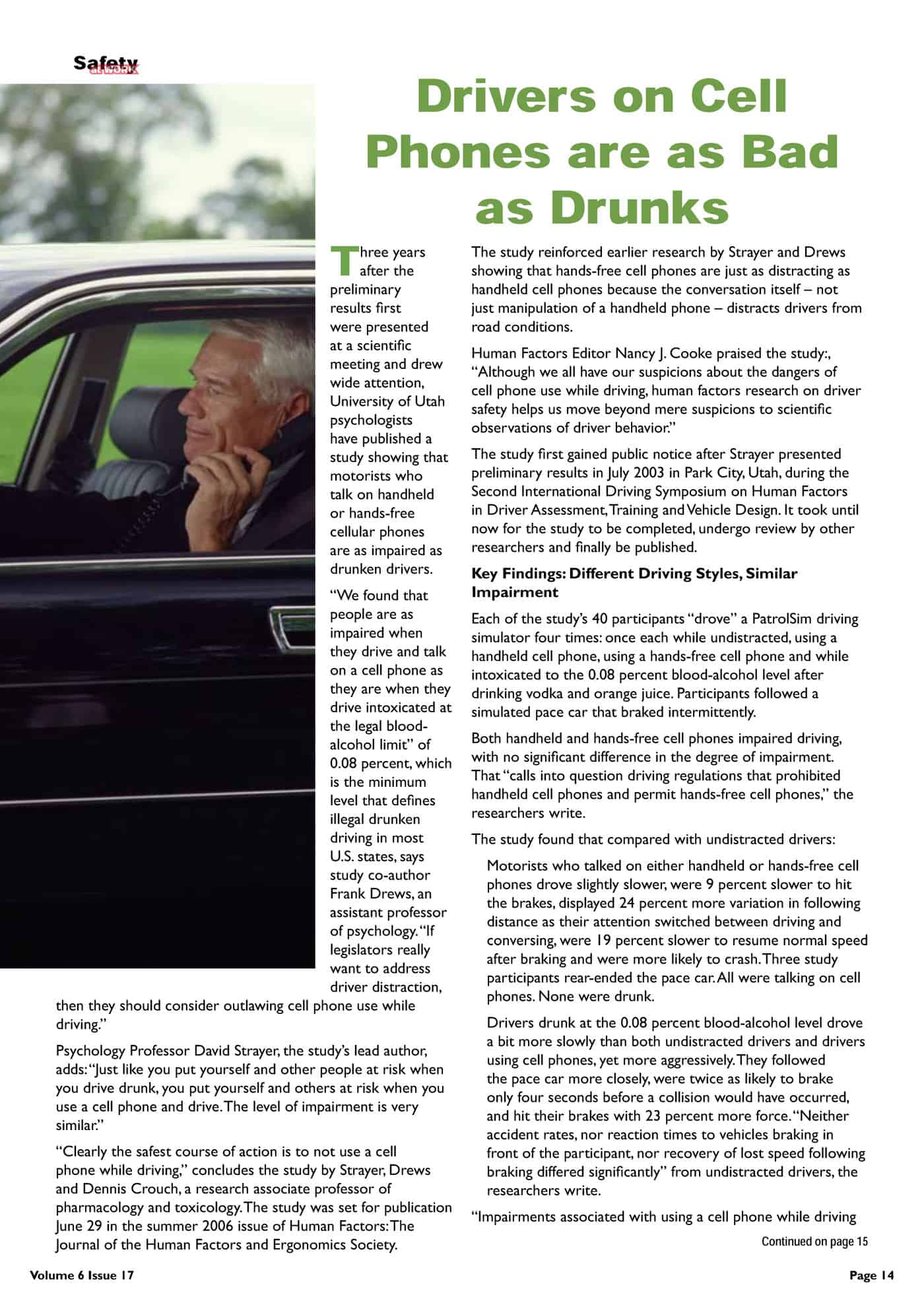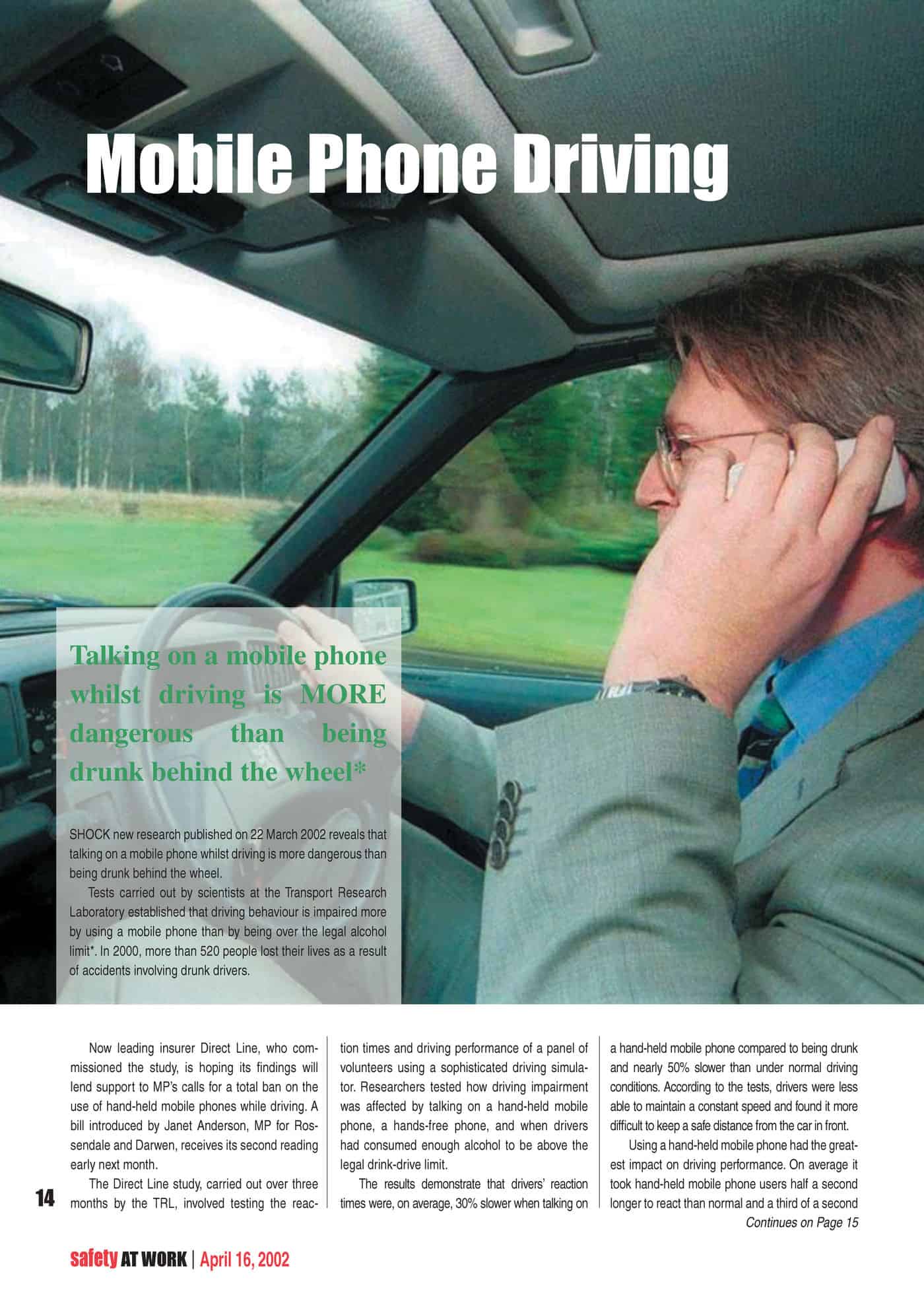WorkSafe Western Australia has two documents currently open for public comment. One concerns a draft code of practice for the prevention of falls from commercial fishing vessels. The other may have a wider appeal as it is a draft code of practice for the prevention and control of Legionnaires’ disease.
 The man overboard code is an example of established hazard management and risk control options for a niche hazard in a niche working environment, however, it is often in these areas where procedural and technical processes are most easily recognised. The draft code is in a format, and has a degree of clarity, that encourages discussion and examination.
The man overboard code is an example of established hazard management and risk control options for a niche hazard in a niche working environment, however, it is often in these areas where procedural and technical processes are most easily recognised. The draft code is in a format, and has a degree of clarity, that encourages discussion and examination.
Readers may find some useful information for those workers who work alone or in isolation, for those who need to undertake tasks at nighttime and in intense darkness, and for those workplaces that require a strict induction for new workers.
 Similarly, the Legionnaire’s code of practice builds on established risk management concepts and shows that businesses still need to prevent legionnaire’s infections even if there is a regulatory/licensing system in place for cooling towers.
Similarly, the Legionnaire’s code of practice builds on established risk management concepts and shows that businesses still need to prevent legionnaire’s infections even if there is a regulatory/licensing system in place for cooling towers.
On a formatting note, both these draft codes could have benefited from the regulators embracing more of the Web 2.0 concepts. The PDF files do have some hyperlinks for some more information or emails but there could be a lot more effort put in to making the drafts a hub for the documents’ references. For instance, mentions of legislation could lead to online versions so that those commenting online can flick back and forth from reference to topic.
[Just imagine how much more helpful a code of practice with such functionality could be to a small business – wiki + blog+ safety = better compliance]
In the Legionnaire’s draft there are tags on page 36 that could lead to the online text of the Acts referred to. The tags are a good idea but could use increased functionality.
Lastly, the Legionnaire’s code references eight Australian Standards and publications. It is a reasonable expectation that, for this hazard, industry submissions will be the majority and those parties already have the Standards. However, if a broad consultation is required, many interested parties may find purchasing these Standards a substantial cost burden, which SafetyAtWorkBlog calculated to be at least $A390 for the PDF versions.

 No US State has banned the practice because social use of mobile phones has become so widespread that any ban is impossible to enforce effectively.
No US State has banned the practice because social use of mobile phones has become so widespread that any ban is impossible to enforce effectively. The industrialised world, in particular, has been wrestling with the hazard of phones and driving for well over a decade. One
The industrialised world, in particular, has been wrestling with the hazard of phones and driving for well over a decade. One  According to a 2004 report by the US National Highway Traffic Safety Administration reported by UPI (unable to find a link)
According to a 2004 report by the US National Highway Traffic Safety Administration reported by UPI (unable to find a link)